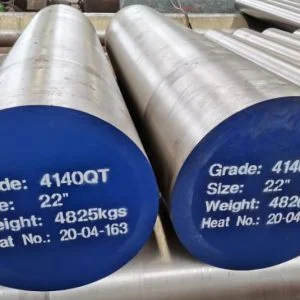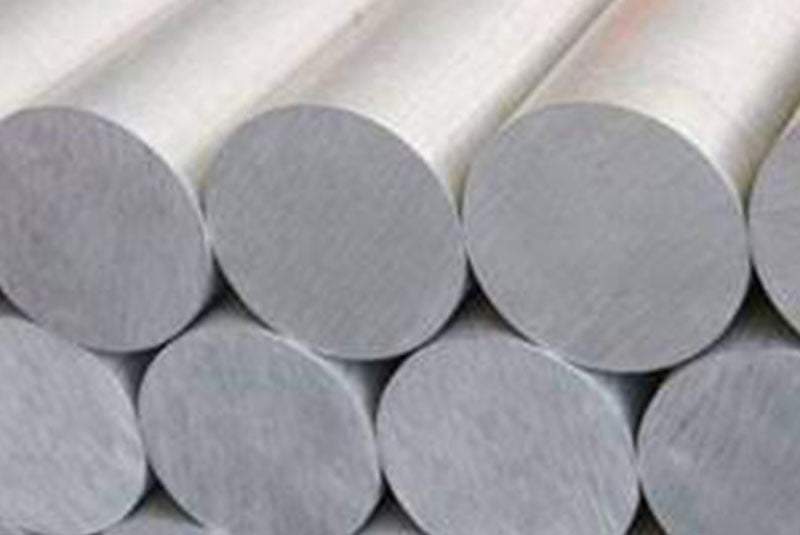Introduction

Steel 4140 is a versatile alloy known for its exceptional mechanical properties and wide range of applications in industries such as automotive, aerospace, and manufacturing. In this blog, we delve into the key characteristics and applications of 4140 steel, shedding light on its chemical composition, mechanical properties, heat treatment, and more.
Chemical Composition of Steel 4140
Steel 4140 belongs to the family of low-alloy steels and is primarily composed of iron, carbon, chromium, and molybdenum. Below is a table detailing the typical chemical composition of 4140 steel:
| Element | Carbon (%) | Chromium (%) | Manganese (%) | Molybdenum (%) |
|---|---|---|---|---|
| Composition | 0.38-0.43 | 0.8-1.1 | 0.75-1.0 | 0.15-0.25 |
Mechanical Properties
Mechanical properties are crucial considerations when selecting materials for engineering applications, and 4140 steel boasts impressive characteristics that render it suitable for various demanding environments.
Tensile Strength: 4140 steel is renowned for its exceptional tensile strength, typically ranging from 655 MPa (95,000 psi) to 930 MPa (135,000 psi). This high tensile strength ensures that components made from 4140 steel can withstand significant forces without experiencing deformation or failure, making it ideal for applications where structural integrity is paramount.
Yield Strength: In addition to its impressive tensile strength, 4140 steel also exhibits a substantial yield strength ranging from 415 MPa (60,000 psi) to 725 MPa (105,000 psi). The yield strength represents the maximum stress a material can endure without undergoing permanent deformation, highlighting the robustness of 4140 steel and its ability to perform reliably under load-bearing conditions.
Hardness: Steel 4140’s hardness is another defining attribute that contributes to its suitability for demanding applications. Through proper heat treatment processes, such as quenching and tempering, 4140 steel can achieve a hardness of 28-32 HRC (Rockwell C scale). This high level of hardness imparts excellent wear resistance to the material, ensuring prolonged service life and durability in abrasive environments.
Applications of Steel 4140
The versatility and robustness of steel 4140 make it a highly sought-after material in various industries, where its exceptional properties cater to a diverse range of applications.
Automotive Industry: Steel 4140 plays a crucial role in the automotive sector, where components are subjected to rigorous conditions. In the manufacturing of automotive parts, such as crankshafts, gears, and axle shafts, 4140 steel’s high strength, toughness, and wear resistance ensure optimal performance and reliability. These components endure substantial loads and harsh operating environments, making 4140 steel an ideal choice for enhancing durability and longevity.
Aerospace Sector: In the aerospace industry, where safety and performance are paramount, 4140 steel finds extensive use in critical applications. Structural components, including aircraft frames, landing gear, and engine parts, benefit from the superior mechanical properties of 4140 steel. Its high strength-to-weight ratio, coupled with excellent fatigue resistance, contributes to the overall efficiency and reliability of aerospace systems, ensuring optimal performance under demanding operating conditions.
Manufacturing Sector: Steel 4140 is highly favored in the manufacturing sector for its suitability in tooling, dies, and machine components. The manufacturing environment demands materials capable of withstanding heavy loads, repetitive stress, and abrasive wear. Steel 4140’s combination of high strength, toughness, and wear resistance makes it an ideal choice for fabricating tooling and dies used in metal stamping, forging, and extrusion processes. Moreover, machine components such as shafts, gears, and spindles benefit from the durability and reliability offered by 4140 steel, enhancing overall operational efficiency and reducing downtime.
Heat Treatment of Steel 4140

Heat treatment plays a crucial role in enhancing the properties of 4140 steel. Common heat treatment processes include quenching and tempering, which improve hardness, strength, and toughness. The table below summarizes the typical heat treatment process for 4140 steel:
| Process | Temperature (°C) | Duration | Purpose |
|---|---|---|---|
| Annealing | 815-845 | 1-2 hours | Soften the steel, improve machinability |
| Quenching | 840-870 | 30 minutes | Harden the steel, increase strength |
| Tempering | 150-260 | 1 hour | Improve toughness, reduce brittleness |
Conclusion
Steel 4140 is a versatile alloy renowned for its exceptional mechanical properties and broad applicability across different industries. Its combination of high strength, toughness, and wear resistance makes it an ideal choice for demanding applications where reliability and performance are paramount.
FAQ
Q: What are the welding considerations for steel 4140?
A: Welding of steel 4140 requires preheating and post-weld heat treatment to prevent cracking and maintain desired mechanical properties.
Q: Is steel 4140 susceptible to corrosion?
A: While steel 4140 has good resistance to atmospheric corrosion, it may exhibit susceptibility to certain corrosive environments. Proper surface protection and maintenance are essential for corrosion prevention.
Q: Can steel 4140 be machined easily?
A: Steel 4140 can be machined with the appropriate tools and techniques, although its high hardness after heat treatment may pose challenges. Proper machining parameters and tool selection are crucial for achieving desired results.
In conclusion, steel 4140 is a highly versatile alloy with a wide range of applications, from automotive to aerospace and manufacturing. Understanding its properties and optimal usage can help maximize its performance and reliability in various engineering contexts.
